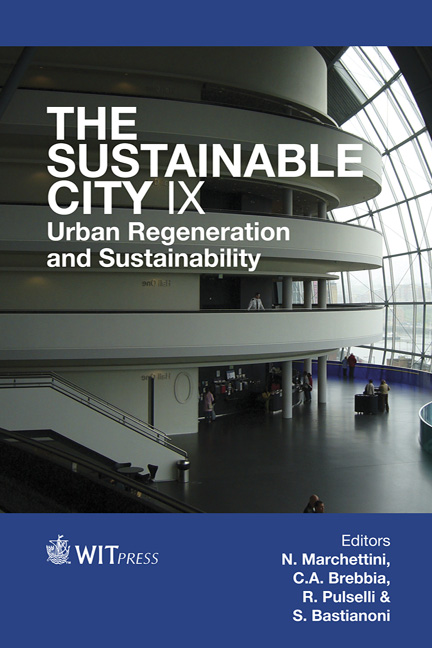A Comprehensive Lifecycle Evaluation Of Vertical Greenery Systems Based On Systemic Indicators
Price
Free (open access)
Transaction
Volume
191
Pages
8
Page Range
1017 - 1024
Published
2014
Size
599 kb
Paper DOI
10.2495/SC140862
Copyright
WIT Press
Author(s)
R. M. Pulselli, F. Saladini, E. Neri, S. Bastianoni
Abstract
Vertical Greenery Systems (VGS) are relatively light structures anchored on building facades with plants embedded on felt layers and nurtured by a hydroponic watering system. These systems can have positive effects on environmental performance at both the building scale (i.e. energy saving for cooling) and the urban scale (i.e. urban heat island effect mitigation). A research project, namely GREENED, has been developed for detecting the environmental profile of VGS based on lifecycle processes. Systemic indicators, such as Carbon Footprint (given in kg CO2-eq) and eMergy (given in solar emergy Joules – seJ), can provide information on environmental impacts or costs, due to the manufacturing and sustenance of VGS, and benefits, in terms of energy saving or other ecosystems services (e.g. CO2 sequestration by plants). The cost to benefit ratio allows for a comprehensive evaluation of VGS sustainability. Outcomes from a case study (i.e. 98m2 facade on a 1000m3 building) reveal that, in given conditions (i.e. massive wall envelope, south-oriented facade, open air-cavity, integrated water harvesting system, local recourse use), environmental costs can be compensated by benefits within 25 years. This allowed for a deeper understanding of lifecycle processes and the conscious use of VGS in an urban context.
Keywords
Carbon Footprint, EMergy Evaluation, global warming, Living Walls, sustainability





